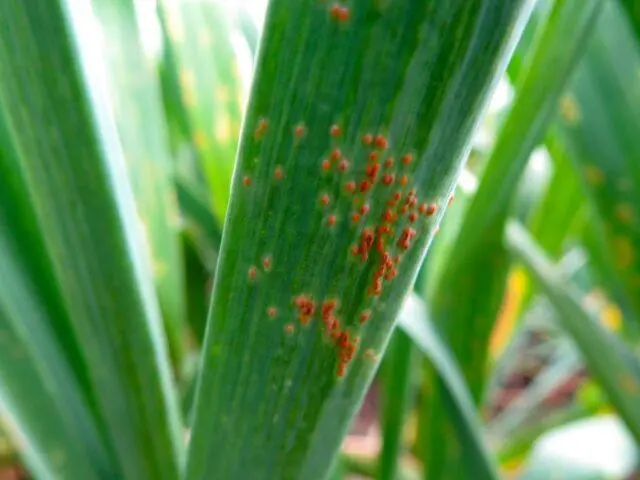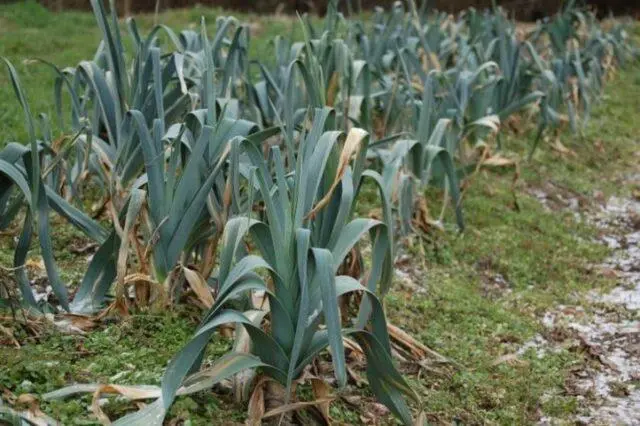Contents
The photo and description of the slug onion must be studied before planting a crop in the garden. The plant differs from the more familiar varieties in appearance and taste, although the cultivation rules are generally the same.
Description of the slime onion
Slime onion, or drooping onion (Allium nutans), is a perennial plant of the Onion family. It has cylindrical or conical underground heads up to 2 cm in diameter in a thin shell. Bulbs are attached to a rhizome growing horizontally or at an angle. The stem of the plant is thick, up to 70 cm tall, first drooping, but then straightening by the time of flowering.
The slime onion is very different from other varieties in the structure of feathers. The leaves of the plant are blunt, with rounded tips, sickle-shaped, reach a length of 30 cm. The structure of the feathers is juicy, mucous inside, easily broken, and have a slightly sharp taste. During flowering, the slime brings spherical thick umbrellas of pink or purple, due to which it acquires a very beautiful appearance.
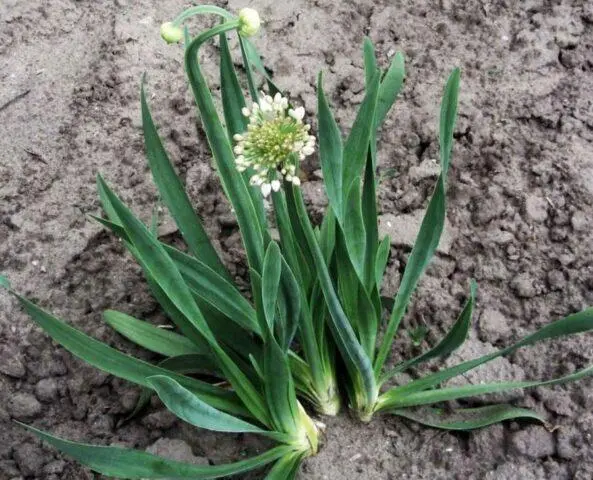
In the decorative period, the slime onion enters 2-3 years of life.
In one place, onions can grow up to six years. Only young feathers of the culture are eaten. The plant’s underground false bulbs are very small and inedible.
Varieties of slime onion
Slime onions are represented by many varieties that differ in flavor and yield. There are several of the most popular.
Greene
Tall onion slime with light green feathers has a pronounced garlic aroma and a slightly spicy taste. The plant gives up to 6 kg of yield per meter of garden, continuously grows leaves in one place for several years.

The advantages of the Green variety include resistance to white rot and downy mildew.
Leader
A popular mid-season variety of slime onion gives tender and juicy greens with a spicy taste. Allows you to harvest monthly, from a meter of planting you can get up to 3,5 kg of plant feathers.
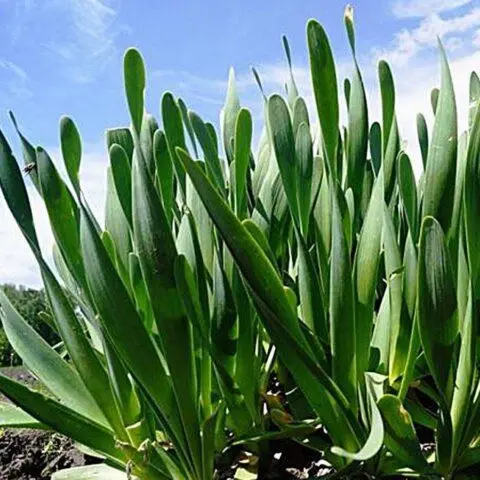
Onion-slizun Leader has increased frost resistance and is suitable for the northern regions
Dwarf
A short variety stretches up to 20 cm above the ground and produces abundant feathers, slightly twisting in a spiral. The plant calmly tolerates low temperatures, withstands drought well.
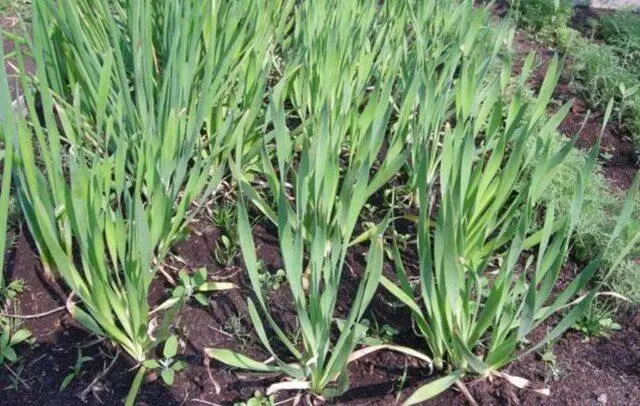
Onion-slizun Dwarf gives 1,5 kg of feathers in one cut
Salad
Mid-season onion-slizun has a rather mild taste and garlic smell, brings more than 3 kg of greens per meter of the garden. The plant rarely suffers from fungi and pests, therefore it is suitable for breeding on difficult soils.
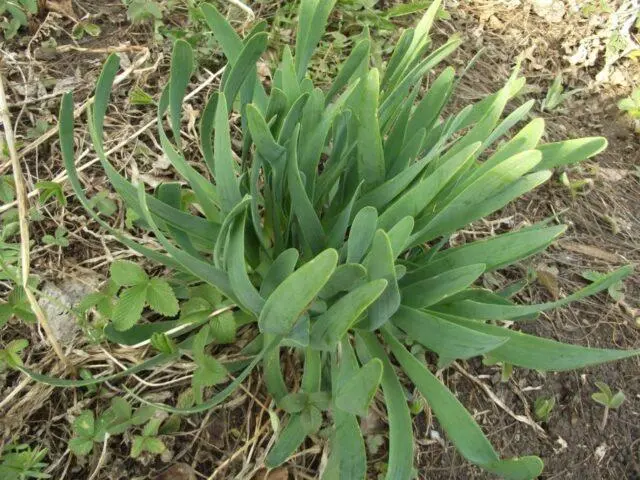
Variety Lettuce allows you to harvest 40 days after germination
Waltz
An early slime onion brings a crop within a month after germination, up to 900 g of feathers are cut from one bush. It has good juiciness and pleasant spicy taste. The plant is often used in landscape design – it is planted in flower beds and on alpine slides.

Over the summer, up to 4 kg of greens can be harvested from one Waltz slug onion.
Advantages and disadvantages
Onion slime has many advantages. The positive aspects of the plant include:
- early ripening;
- high productivity;
- rich taste and aroma;
- cold resistance;
- unpretentiousness to growing conditions;
- development in one place for more than five years.
However, the slime onion has its drawbacks. Namely:
- reacts sensitively to waterlogging of the soil and begins to rot;
- does not produce edible bulbs – only feathers are suitable for consumption.
The slime onion does not respond well to a long lack of moisture and an excess of hot sun. The feathers of the plant become less juicy and coarsen.
The benefits and harms of slime onions
The greens of the slime onion have not only good taste, but also great benefits. Fresh plant feathers:
- increase hemoglobin in anemia;
- improve immunity and protect against viruses and infections;
- normalize blood pressure and strengthen blood vessels;
- regulate the work of the thyroid gland;
- align the hormonal background;
- normalize the acid-base balance in the body;
- protect against heart disease;
- help with inflammation of the mouth and throat.
At the same time, it should be borne in mind that in excess quantities, onion slime can provoke heartburn, stomach pain and increased pressure. It is necessary to refuse the plant in the diet:
- with individual intolerance;
- with stomach ulcers and pancreatitis;
- with gastritis with high acidity;
- with inflammation of the urinary system;
- with hypertension.
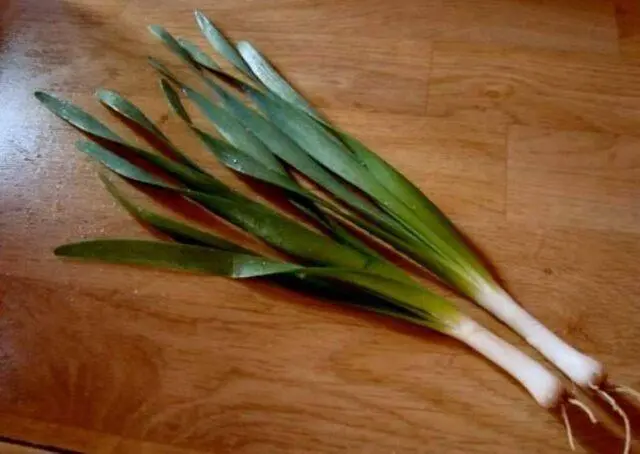
Slime onion, when used in moderation, stimulates appetite
Planting onion-slizun in the open field
Growing onion slime from seeds is carried out both at home and in open ground. Planting in the garden allows you to regularly receive large volumes of fresh crops.
Terms of planting
Slizun onions are sown in open ground after the snow cover melts and the soil warms up to 8-10 ° C. Planting is usually carried out in mid-April or early May. In the southern regions and in the north, dates may shift in one direction or another in accordance with the weather.
Seed preparation
Regardless of whether the slug onion is to be grown at home in a pot or in open ground, the seeds must be treated for diseases and pests before planting. To do this, the material is placed in a light pink manganese solution for about ten seconds, and then washed in clean water.
To accelerate the germination of the plant, it is also recommended to soak the seeds in any growth stimulator. It is necessary to leave them in the solution for several hours in accordance with the instructions.
Site selection and preparation
For planting slime onions, it is necessary to choose a lit place with well-drained soil. The plant responds positively to moisture, but does not like waterlogging. Therefore, you need to make sure that there is no groundwater nearby.
The onion-slizun is undemanding to the soil, but it does not grow well on clay and acidic soils. Loams are best for him.
When planting, it is necessary to take into account the rules of crop rotation. The culture is located in those places where tomatoes, cabbage, cucumbers, potatoes or legumes used to grow. It is not recommended to plant in areas after other onion slug.
Landing scheme
Usually, slime onions are planted in open ground with seeds from late April to mid-summer. Algorithm:
- Planting material is pre-disinfected in a solution of potassium permanganate and soaked in a growth stimulator.
- Seeds are germinated for several days in a damp cloth.
- A plot in the garden, dug up with compost in the fall, is loosened and grooves are made up to 2 cm deep.
- Water the beds and sow the seeds at small intervals of 5 cm.
- Cover the area with a film for insulation.
After the formation of the first green sprouts, polyethylene is removed from the beds. Seedlings are thinned out from time to time as they develop. As a result, at least 15 cm should remain between neighboring plants.
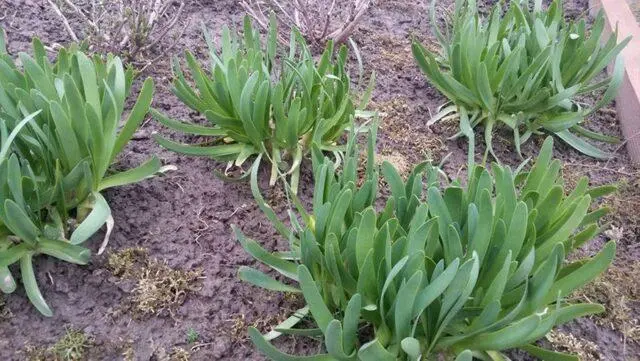
Between rows when planting slime onions, you need to leave 20 cm of space
Growing seedlings of slime onion
It is especially convenient to grow slime onions on a balcony or windowsill until the final onset of heat in the northern regions. The method allows you not to waste too much time waiting for the right weather for sowing seeds.
Seedlings are grown according to the following scheme:
- At the end of February or at the beginning of March, the seeds are soaked for a day in warm water and disinfected with a solution of potassium permanganate.
- In shallow containers filled with nutrient soil, grooves are made and the soil is watered abundantly.
- Dried seeds are laid in recesses of no more than 1 cm and sprinkled with earth on top.
- Cover the containers with the plant with film or glass.
- Until the appearance of greenery, they are kept in a warm place with moderate lighting.
After the emergence of seedlings, they begin to grow onion-slug on the windowsill, while slightly lowering the temperature, and water the seedlings as needed. For elongated seedlings, a pick is carried out, leaving only the strongest and most developed plants in the boxes. Seedlings are transferred to the soil with the onset of final heat in late April or early May.
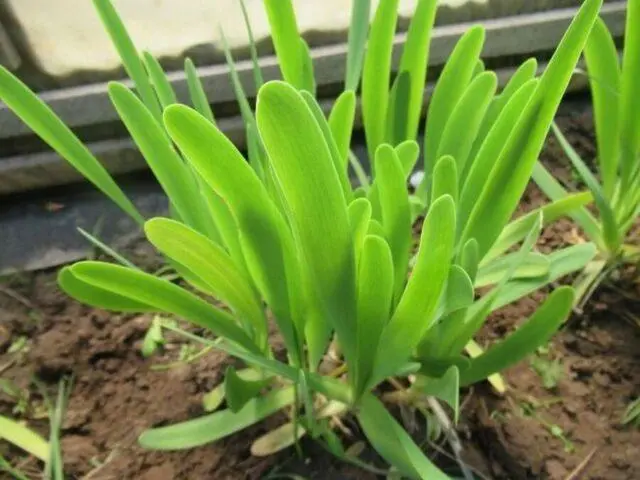
7-10 days before transplanting into the garden for seedlings of slime onion, you need to start hardening
Care for onion-slizun in the open field
When growing slug onions in the garden, you need to make sure that the culture does not lack moisture and nutrients. If this condition is met, the crops will be stable and juicy.
Watering
Slime onions are grown for greenery, so the crop needs moisture throughout the growing season. The beds are watered as the soil dries up from spring to late August or early September. After the final cut, moisten the onion-slug is stopped so that the plant can go into a dormant state.
Loosening and weeding
Stagnation of moisture leads to rotting of the roots of the culture, so the beds with slime onions need to be regularly loosened. The procedure is carried out after each watering. At the same time, weeds are weeded out, which take away nutrients from the plant.
How to feed onion slime
You can feed the onion-slug in the spring with complex mineral fertilizers with urea, phosphorus and potassium or an infusion of bird droppings. Nutrients will ensure rapid growth of the crop and make the greens more juicy. It is better to give preference to organic matter so that the edible plant does not accumulate nitrates.
Top dressing is recommended to be repeated throughout the season after each cutting of feathers. In autumn, rotted manure or compost can be scattered on the beds, they will insulate the plant and increase the winter hardiness of the slime onion.
Fighting diseases and pests
Slime onions are relatively resistant to fungi and insects, but still suffer from some diseases. In the garden they harm him:
- rust – the fungus develops when the soil is waterlogged, the feathers of the plant are covered with reddish small spots;

In case of rust, you need to thin out the bed, leaving only healthy onions, and spray the plantings with Bordeaux liquid
- peronosporosis – downy mildew leaves grayish or pale purple marks on the leaves of the slime onion.

The fight against peronosporosis is carried out with copper sulphate or fungicides
Of the pests for the plant, the onion fly is the most dangerous. She lays larvae, which are taken to eat onion slime turnips from the inside. You can get rid of the pest by dusting with tobacco dust, spraying with infusion of wood ash or a solution of laundry soap also benefits.
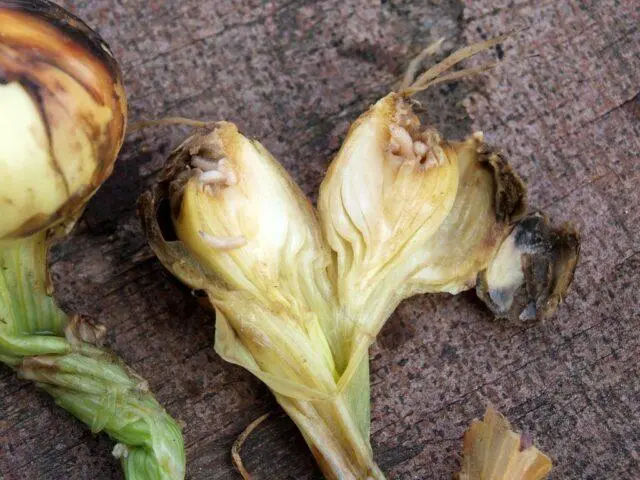
When affected by an onion fly, a strong unpleasant odor emanates from the beds due to rotting turnips and stems.
To prevent fungi and insects, you need to monitor the degree of soil moisture, loosen the soil in time and remove plant debris from the beds. Before planting a slug onion in the garden, it is recommended not only to disinfect the seeds, but also to shed the earth with a solution of potassium permanganate to eliminate possible microorganisms.
Reviews of the slime onion
Conclusion
The photo and description of the slime onion demonstrate a hardy and fairly beautiful garden culture with simple care requirements. The plant throughout the summer gives juicy healthy greens for salads and main courses. At the same time, for abundant crops, only watering and periodic top dressing are needed.










